Elisa Masi
Comparison of Decision Tree Based Classification Strategies to Detect External Chemical Stimuli from Raw and Filtered Plant Electrical Response
May 13, 2017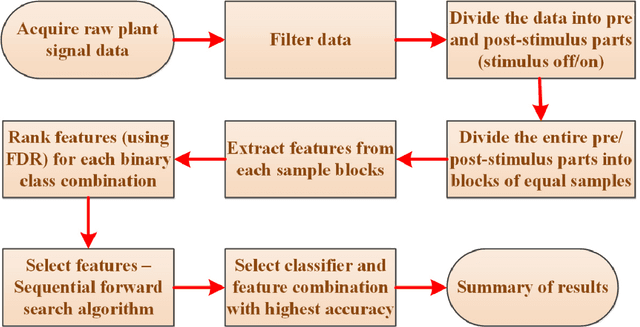
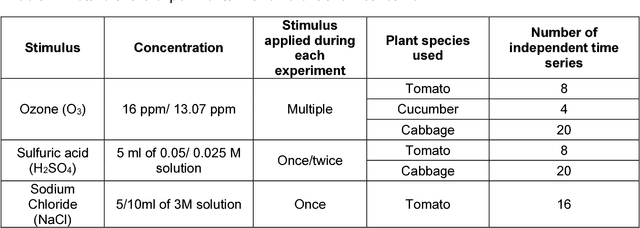
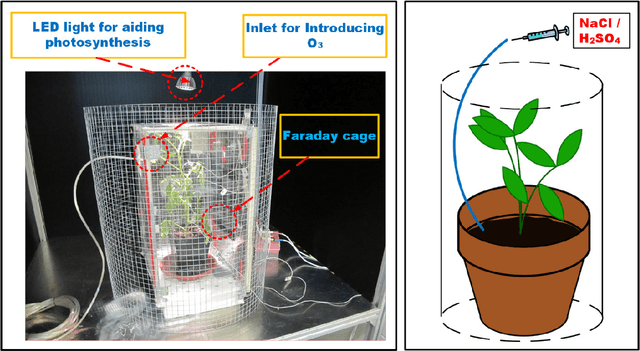

Abstract:Plants monitor their surrounding environment and control their physiological functions by producing an electrical response. We recorded electrical signals from different plants by exposing them to Sodium Chloride (NaCl), Ozone (O3) and Sulfuric Acid (H2SO4) under laboratory conditions. After applying pre-processing techniques such as filtering and drift removal, we extracted few statistical features from the acquired plant electrical signals. Using these features, combined with different classification algorithms, we used a decision tree based multi-class classification strategy to identify the three different external chemical stimuli. We here present our exploration to obtain the optimum set of ranked feature and classifier combination that can separate a particular chemical stimulus from the incoming stream of plant electrical signals. The paper also reports an exhaustive comparison of similar feature based classification using the filtered and the raw plant signals, containing the high frequency stochastic part and also the low frequency trends present in it, as two different cases for feature extraction. The work, presented in this paper opens up new possibilities for using plant electrical signals to monitor and detect other environmental stimuli apart from NaCl, O3 and H2SO4 in future.
Exploring Strategies for Classification of External Stimuli Using Statistical Features of the Plant Electrical Response
Nov 29, 2016
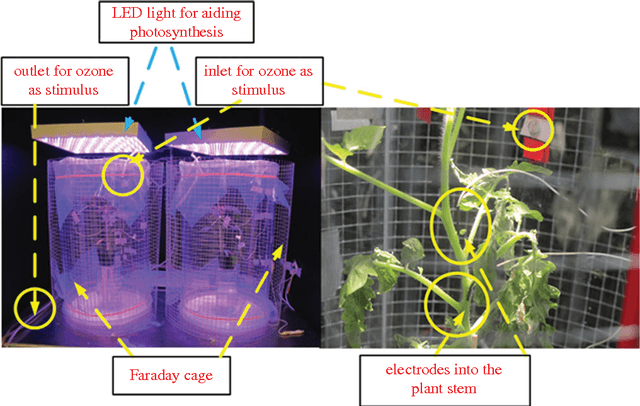
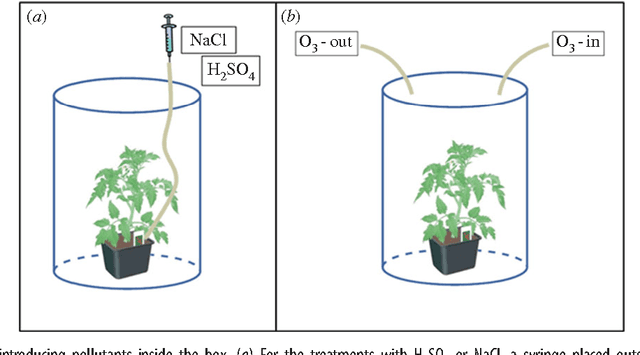
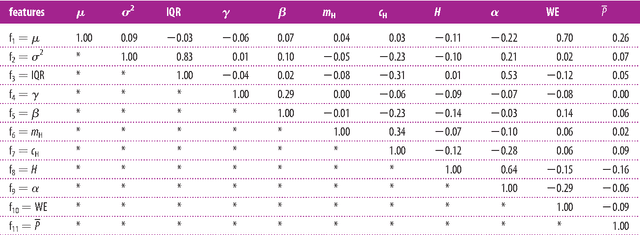
Abstract:Plants sense their environment by producing electrical signals which in essence represent changes in underlying physiological processes. These electrical signals, when monitored, show both stochastic and deterministic dynamics. In this paper, we compute 11 statistical features from the raw non-stationary plant electrical signal time series to classify the stimulus applied (causing the electrical signal). By using different discriminant analysis based classification techniques, we successfully establish that there is enough information in the raw electrical signal to classify the stimuli. In the process, we also propose two standard features which consistently give good classification results for three types of stimuli - Sodium Chloride (NaCl), Sulphuric Acid (H2SO4) and Ozone (O3). This may facilitate reduction in the complexity involved in computing all the features for online classification of similar external stimuli in future.
* 22 pages, 7 figures, 9 tables
 Add to Chrome
Add to Chrome Add to Firefox
Add to Firefox Add to Edge
Add to Edge